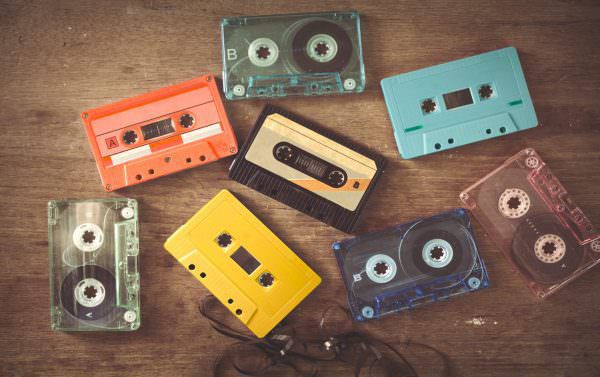
Long before the Compact Disc was invented, the Compact Cassette tape was the most popular format for personal audio playback and recording. However, the convenience and reliability of home CD burners may leave cassette enthusiasts wondering about the best way to convert their tapes to CDs.
Essentially, there are two different ways to convert cassettes to CDs. One method is longer and more drawn out, yet it produces a higher quality result. The second method is faster and easier, however the quality is second to convenience. Before we begin, it may be useful to explain why someone might want to transfer their cassette collection to recordable CDs.
The number one reason for copying tapes to CDs is quality. All magnetic media is susceptible to degradation over time, especially with repeated playback. This can affect the quality of a recording and cause undesired problems such as pops, clicks, and gaps.
In contrast, a compact disc maintains the original quality of the recording without degrading after repeated plays although recordable CDs do degrade over time as the dye becomes unstable. The high quality and improved durability of a CD makes them an excellent storage medium for content originally recorded on magnetic tape.
Computer Recording
One method for converting tapes involves using a computer to digitize the analog audio from your tape collection. A regular personal computer or laptop can perform this task; it is not necessary to have a super high-end machine. However, a large hard drive with plenty of free space is essential.
Start by connecting the stereo output of your cassette deck to the line input of your computer's sound card. Pressing Play will play the sound through your computer's speakers, but you will need a software application to record and save the audio.
Commercial software for audio recording typically ranges between $20 and $100 dollars or more. Some popular programs include Adobe Audition, SONAR by CakeWalk Audio, and Cubase by Steinberg. Free audio editing software such as Audacity and Reaper are good fully-featured alternatives available at no cost.
These software packages will allow users to record, edit, and manipulate the raw audio tracks captured from the tapes. Different programs contain different features, but in general they will all allow you to edit start and end points, adjust levels, balance, and fading. Some programs may contain advanced features such as noise reduction.
With the final audio tracks recorded and edited, they are ready to be burned to a blank CD. This can be done with a program such as Nero or Roxio, though some editing programs may contain a built-in burning application.
This is a very time-intensive process, however it gives users full control over every step of the conversion. It is recommended for advanced users, professionals, and people who are comfortable working with computers in general.
Standalone Conversions
While computer recording offers many advanced features, some of us just don't have the time required to record and edit each track individually. This is especially true for large collections involving dozens or hundreds of tapes.
Fortunately, a standalone cassette to CD converter deck makes the job as painless as possible. A favorite among audiophiles is the CC-222SL recorder from TASCAM. This is an all-in-one tape to CD dubbing machine that's very easy to use.
The TASCAM machine is about the size of a stereo receiver and includes hardware for a rackmounted installation if desired. Simply place your master cassette in the deck and slide a blank CD into the slot. With the source set to TAPE, press Record and the machine takes care of the rest!
Just because the machine is easy to use does not mean you have to compromise on features. The CC-222SL also features Dolby Noise Reduction and extra RCA inputs for recording from other sources such as turntables. This method requires no knowledge of computers or software to convert your library of cassettes to compact discs.
I hope this guide has been helpful in explaining the two primary ways of transferring cassette tapes to recordable CDs.

